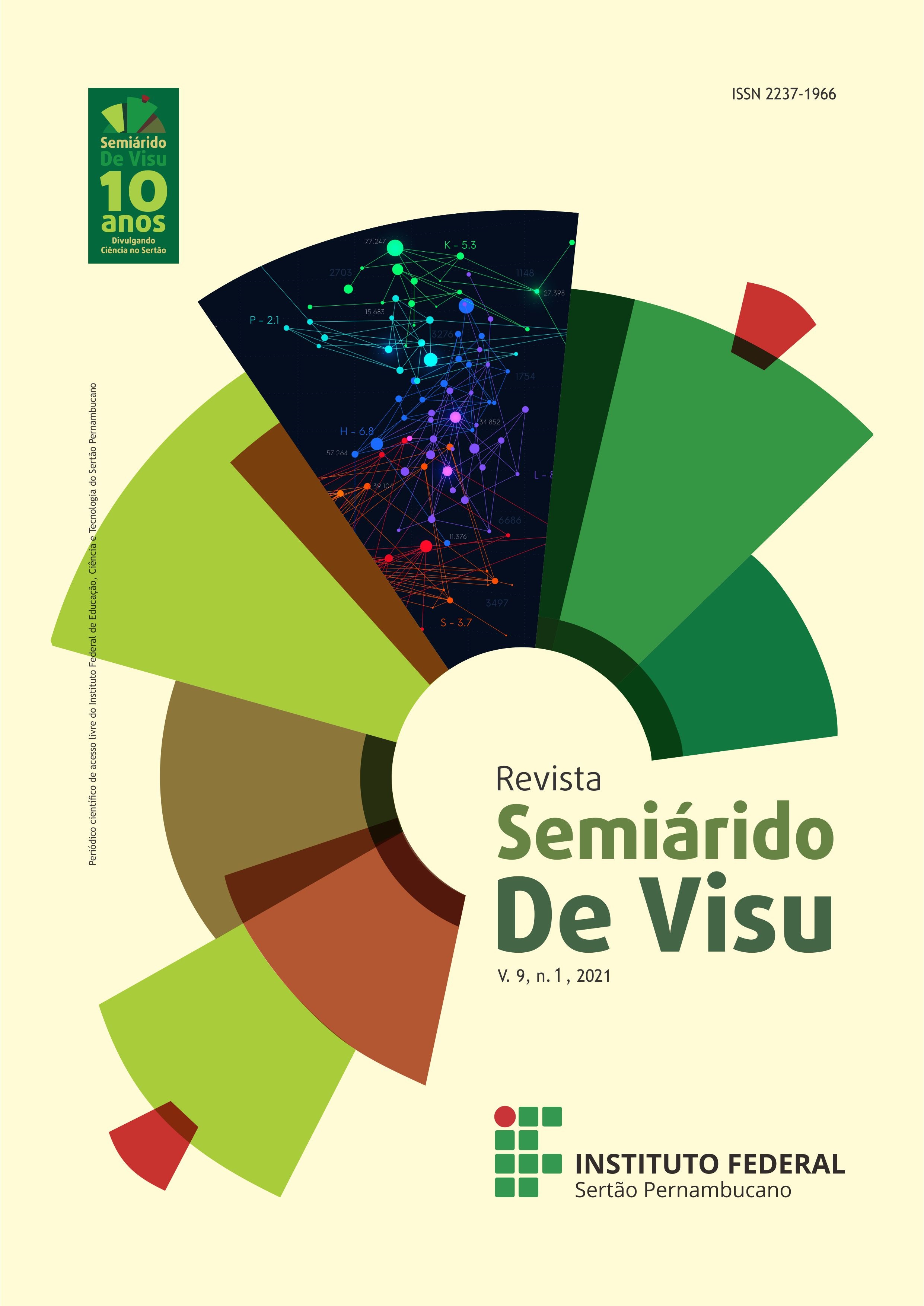Evasion and Retention Prediction in Vocational High School: A Neural Network based Approach
DOI:
https://doi.org/10.31416/rsdv.v9i1.32Keywords:
Evasion, Retention, Time Series, Neural Network, PredictionAbstract
This work presents a study about time series, related to rates of evasion and retention in vocational high school,
aiming to identify peculiar characteristics of these series and, based on such study, to propose an approach based
on neural networks, multilayer-like, to predict this particular kind of time series. For the learning process, it is
used the back propagation (BP) algorithm. An experimental analysis is conducted with the proposed approach using time series related to the evasion and retention rates of the Federal Institute of Ceará. In these experiments, relevant measures are used to assess the prediction performance, and the Friedman and Tukey tests to validate it statistically. The achieved results indicate that the proposed approach in this work is able to efficiently predict these series within evaluated period, being feasible options for the prediction of evasion and retention rates in vocational high school institutions.
References
AHMED, A. B. E. D.; ELARABY, I. S. Data mining: A prediction for student’s performance using classificationmethod.World Journal of Computer Application and Technology, v. 2, n. 2, p. 43–47, 2014.
ARAÚJO, R. de A.Mercado de Ações Brasileiro em Alta-Frequência: Evidências de sua Previsibilidade comModelagem Morfológica-Linear. Tese (Doutorado) — Universidade Federal de Pernambuco, 2016.
BAKER, R.; ISOTANI, S.; CARVALHO, A. Mineração de dados educacionais: Oportunidades para o brasil.Brazilian Journal of Computers in Education, v. 19, n. 02, 2011.
BOX, G. E. P.; JENKINS, G. M.; REINSEL, G. C.Time Series Analysis: Forecasting and Control. Third. NewJersey: Prentice Hall, 1994.
CLEMENTS, M. P.; FRANSES, P. H.; SWANSON, N. R. Forecasting economic and financial time-series withnon-linear models.International Journal of Forecasting, v. 20, p. 169–183, 2004.
CLEMENTS, M. P.; HENDRY, D. F. On the limitations of comparing mean square forecast errors.Journal ofForecasting, v. 12, n. 8, p. 617–637, Dec. 1993.
COCCO, E. M.; SUDBRACK, E. M. Ensino médio no contexto atual e os desafios de acesso e permanência.Impulso, v. 26, n. 67, p. 7–22, 2016.
CUNHA, D. M. et al.Formação-profissionalização de professores e formação profissional e tecnológica:fundamentos e reflexões contemporâneas. [S.l.]: PUC Minas Gerais, 2013.
CUNHA, J. A. da; MOURA, E.; ANALIDE, C. Data mining in academic databases to detect behaviors of studentsrelated to school dropout and disapproval. In:New Advances in Information Systems and Technologies. [S.l.: s.n.],2016. p. 189–198.
DORE, R.; ARAUJO, A. D. de; MENDES, J. de S.Evasão na educação: estudos, políticas e propostas deenfrentamento. [S.l.]: Editora do IFB/RIMEPES, 2014.
DORE, R.; LUSCHER, A. Educação profissional e evasão escolar. In:Encontro Internacional de Pesquisadoresde Políticas Educativas. [S.l.: s.n.], 2008. p. 197–203.
HAYKIN, S.Neural networks: A comprehensive foundation. New Jersey: Prentice Hall, 1998.
HAYKIN, S.Neural Networks and Learning Machines. Canada: McMaster University, 2007.
JAISWAL, A. S. G.; YADAV, S. K. Analytical approach for predicting dropouts in higher education.InternationalJournal of Information and Communication Technology Education, v. 3, n. 15, p. 1–14, 2019.
JUNIOR, F. T.; SANTOS, J. R. dos; MACIEL, M. de S. Análise da evasão no sistema educacional brasileiro.Revista Pesquisa e Debate em Educação, v. 6, n. 1, p. 73–92, 2017.
JUNIOR, J. G. de O.Identificação de Padrões para Análise da Evasão em Cursos de Graduação UsandoMineração de Dados Educacionais. Dissertação (Mestrado) — Universidade Tecnológica Federal do Paraná, 2015.
KABRA, R. R.; BICHKAR, R. Performance prediction of engineering students using decision trees.InternationalJournal of Computer Application, v. 36, n. 11, p. 1–12, 2011.
KANTZ, H.; SCHREIBER, T.Nonlinear Time Series analysis. Second. New York, NY, USA: CambridgeUniversity Press, 2003.
KAWASE, K. H. F.Aplicação de Redes Neurais RBF e MLP na Análise de Evasão Discente do Curso de Sistemasde Informação da UFRRJ. Dissertação (Mestrado) — Universidade Federal Rural do Rio de Janeiro, 2015.
KIM, Y. S. Comparison of the decision tree, artificial neural network, and linear regression methods based on thenumber and types of independent variables and sample size.Expert Systems with Applications, v. 34, n. 2, p. 1227– 1234, 2008.
KRASKOV, A.; STGBAUER, H.; GRASSBERGER, P. A new auto-associative memory based on lattice algebra.Phys. Rev. E, v. 69, n. 6, 2004.
MARQUEZ-VERA, C.; ROMERO, C.; VENTURA, S. Predicting school failure and dropout by using data miningtechniques.IEEE Revista Iberoamericana de Tecnologias del Aprendizaje, v. 8, n. 1, p. 7–14, 2013.
MARTINHO, V. R. C.; NUNES, C.; MINUSSI, C. R. An intelligent system for prediction of school dropout riskgroup in higher education classroom based on artificial neural networks.IEEE International Conference on Toolswith Artificial Intelligence, 2013.
MARTINHO, V. R. C.; NUNES, C.; MINUSSI, C. R. Prediction of school dropout risk group using neuralnetwork.2013 Federated Conference on Computer Science and Information Systems, p. 111–114, 2013.
MEEDECH, P.; IAM-ON, N.; BOONGOEN, T. Prediction of student dropout using personal profile and datamining approach. In:Intelligent and Evolutionary Systems. Cham: Springer International Publishing, 2016. p.143–155.
NASCIMENTO, R. L. S. do et al. Educational data mining: An application of regressors in predicting schooldropout. In:Machine Learning and Data Mining in Pattern Recognition. Cham: Springer International Publishing,2018. p. 246–257.
OLIVEIRA, D. A. As políticas para o ensino médio na realidade brasileira: uma agenda em disputa.Poiésis-Revistado Programa de Pós-Graduação em Educação, v. 10, n. 17, p. 187–198, 2016.
PERCIVAL, D. B.; WALDEN, A. T.Spectral Analysis for Physical Applications – Multitaper and ConventionalUnivariate Techniques. New York: Cambridge University Press, 1998. ISBN 0-521-43541-2.
PRECHELT, L.Proben1: A set of Neural Network Benchmark Problems and Benchmarking Rules. [S.l.], 1994.
REBELO, J. A. S. Efeitos da retenção escolar, segundo os estudos científicos, e orientações para uma intervençãoeficaz: Uma revisão.Revista portuguesa de pedagogia, v. 43, n. 1, p. 27–52, 2009.
ROMERO, C.; VENTURA, S. Data mining in education.Wiley Interdisciplinary Reviews: Data Mining andKnowledge Discovery, v. 3, n. 1, p. 12–27, 2013.
RUMBERGER, R.; THOMAS, S. The distribution of dropout and turnover rates among urban and suburban highschools.Sociology of Education, v. 73, n. 1, p. 39–67, 2000.
SILVA, J.; DIAS, P. C.; SILVA, M. C. Evasão escolar em cursos técnicos do instituto federal de educação, ciênciae tecnologia de brasília: perfil socioeconômico de estudantes de cursos técnicos subsequentes do campus brasilia.Revista da UIIPS, v. 3, n. 6, p. 279–293, 2015.
TROMBONI, J.; OLEGARIO, F.; LAROQUE, L. F. S. As políticas para o ensino médio na realidade brasileira:uma agenda em disputa.Revista Intersabes, v. 12, n. 25, p. 144–151, 2017.
VIADERO, D. The dropout dilemma: Research hindered by lack of uniform way to count students who quitschool.Education Week, v. 20, n. 21, p. 26–29, 2001.
YASMIN, D. Application of the classification tree model in predicting learner dropout behaviour in open anddistance learning.Distance Education, v. 34, n. 2, p. 218–231, 2013.
YU, C. H. et al. A data mining approach for identifying predictors of student retention from sophomore to junioryear.Journal of Data Science, v. 2, n. 8, p. 307–325, 2010.
ZHANG, G.; PATUWO, B. E.; HU, M. Y. Forecasting with artificial neural networks: The state of the art.International Journal of Forecasting, v. 14, p. 35–62, 1998















